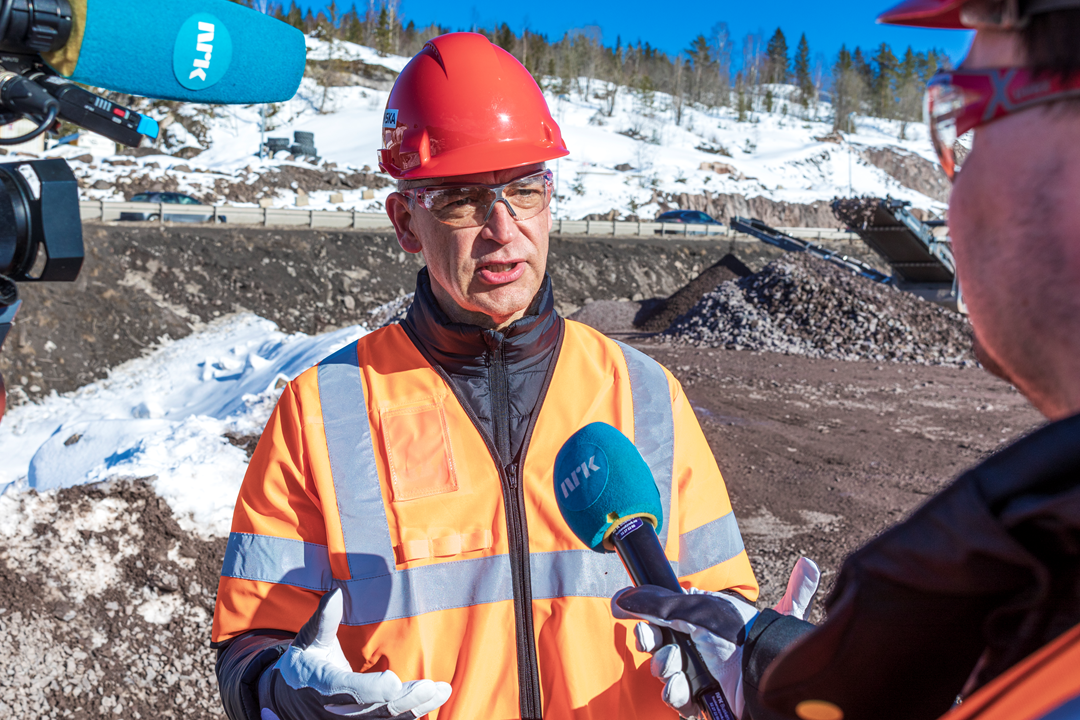This shows how digitalization can aid in cutting emissions, and what we can achieve when businesses and research work together, says Morten Dalsmo, Executive Vice President in SINTEF Digital.
He is incredibly satisfied with the newly completed research project, “Data driven construction sites”, wherein Skanska, Volvo, Ditio, and SINTEF have cooperated in making the construction industry greener, by using artificial intelligence (AI). It is necessary for this industry to find ways to lower its emissions if we want to reach our climate goals.
Idle running half of the time
One of the factors accounting for the high levels of emissions are the construction machines. They are idle running 40-60 per cent of the time that they are in use, according to estimates by the Machine Entrepreneurs Association (MEF). Roughly 200 machines can be in use simultaneously on more extensive road projects, and are difficult to coordinate.
However, with the support from The Research Council of Norway and Innovation Norway, researchers have developed algorithms that use artificial intelligence to automatically coordinate the machine fleet. The result is cuts in emissions, more efficient construction, and lower costs.
It is able to process the data to a much greater extent than what a human can. The construction machinery produces GPS and speed data within seconds, millions of lines with data points from which it can identify patterns every day, and deliver the best recommendations on the other side, explains chief adviser in Skanska, Lars Horn, to NRK.
Can cut millions of liters with fuel
In a year, Norway spends approximately 100 billion NOK on road construction, and about 70 per cent of the costs are related to fuel, personnel and the operation of machines.
Two significant road construction projects in Viken, E16 Åsbygda – Olum and E16 Bjørum – Skaret, are used as pilots for this research. The “Data driven construction sites” goal was to cut 10 per cent of fuel consumption by the construction machines. Results from the pilot projects show that this is a realistic goal.
For the industry itself, this means that it is overall possible to cut fuel consumption by more than 13 million liters yearly (according to 2015 numbers from MEF), writes Skanska in a press release. They are part-owners in the software company, Ditio, which has developed a platform to release the results from the research project for the entire construction industry to view.
SINTEF works with emission cuts in several areas within this industry, and Executive Vice President Dalsmo is aware of the considerable potential to find new solutions.
Currently, it is important for both politicians and businesses to invest in research, so that we can continue to develop technology that will help us reach the climate goals.


